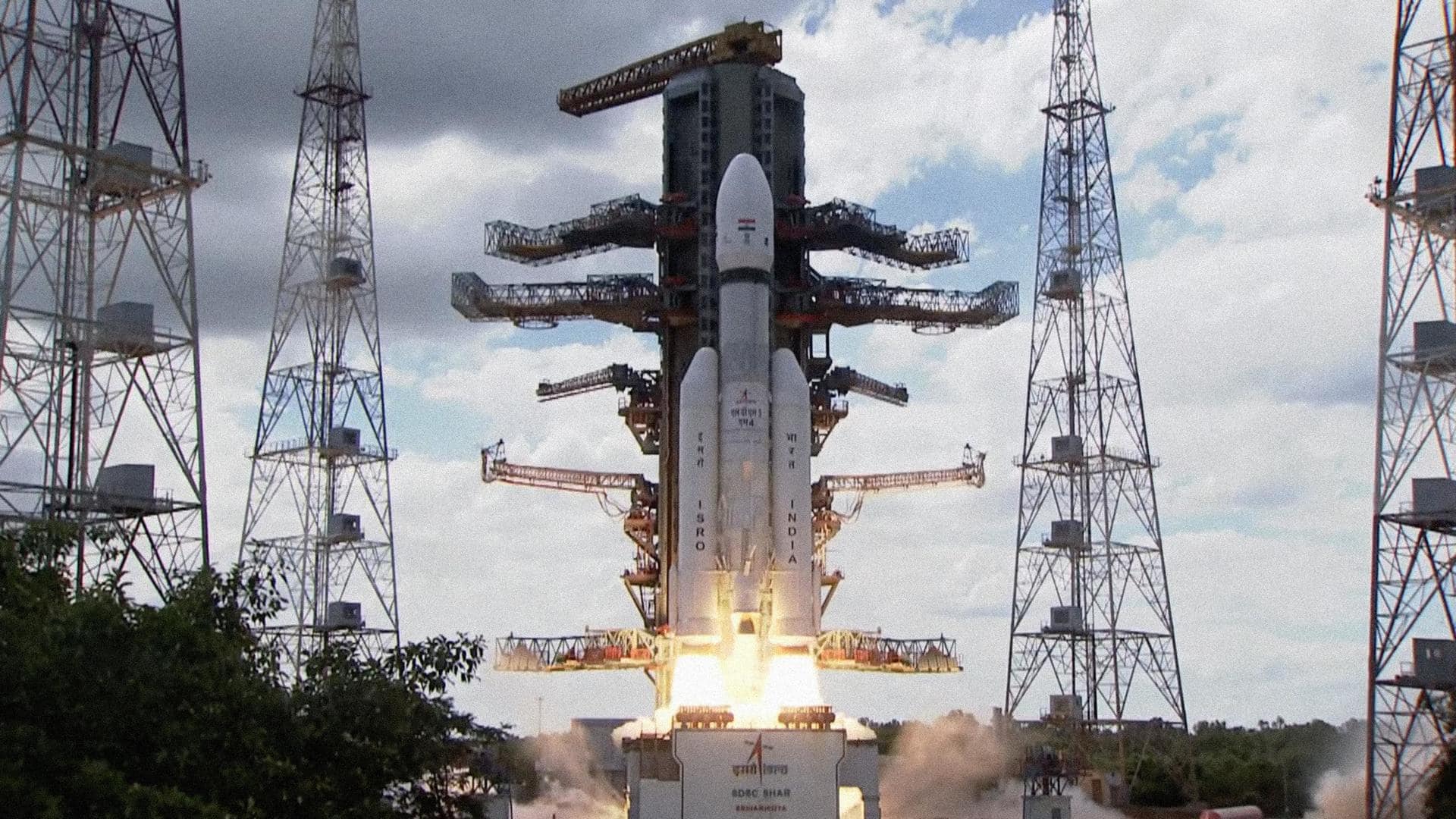
India heads to Moon: ISRO's Chandrayaan-3 mission is successful
What's the story
ISRO has announced the successful separation of the Chandrayaan-3 satellite from the launch vehicle. The satellite has now been injected into the desired orbit to begin its journey to the Moon. In about 40 days, the Chandrayaan-3 module will aim to land near the south pole of the Moon in a historic feat. It was launched earlier today at 2:35pm aboard an LVM3 rocket.
Twitter Post
Chandrayaan-3 scripts new chapter in India's space odyssey: PM Modi
Chandrayaan-3 scripts a new chapter in India's space odyssey. It soars high, elevating the dreams and ambitions of a every Indian. This momentous achievement is a testament to our scientists' relentless dedication. I salute their spirit and ingenuity! https://t.co/gko6fnOUaK
— Narendra Modi (@narendramodi) July 14, 2023
Context
Why does this story matter?
We finally got to witness the much-anticipated launch of India's ambitious lunar mission, Chandrayaan-3. If everything goes according to plan, it will notch a couple of key milestones. It could be India's first-ever successful lunar landing and the world's first to land near the Moon's south pole. Its south pole has intrigued scientists for decades, and Chandrayaan-3 is on course to unravel its mysteries.
Twitter Post
Health of Chandrayaan-3 spacecraft is normal: ISRO
Chandrayaan-3, in its precise orbit, has begun its journey to the Moon.
— ISRO (@isro) July 14, 2023
Health of the Spacecraft is normal.
Module
Mission carries several crucial upgrades from predecessor
Chandrayaan-3 is ISRO's second attempt to land on the Moon, a follow-up to Chandrayaan-2 from 2019. The latter was not completely successful since it crash-landed on the Moon due to a software error. The Chandrayaan-2 mission carried an orbiter that is still studying the Moon today. ISRO has brought in several improvements to Chandrayaan-3 so as to prevent the issues its predecessor faced.
Modules
Chandrayaan-3's lander gets sturdier legs, hazard-avoidance cameras
Chandrayaan-3 consists of a propulsion module (PM) and a lander called Vikram. The latter also includes a rover called Pragyan. The lander has stronger legs to withstand higher landing velocity, carries more fuel, and packs a new laser Doppler velocity meter sensor to aid soft landing. Vikram also has four engines and at least two will be fired during the Moon landing.
Process
Mission to land near Moon's south pole
The three-stage LVM3 rocket will take the Chandrayaan-3 to the elliptical orbit. Following that, the main role of the PM would be to transport the lander-and-rover components into a circular orbit around 100km from the Moon's surface and to disengage the lander configuration. ISRO will then begin the descent operations wherein the lander configuration will head toward touchdown near the Moon's south pole.
Payloads
Lander, rover are carrying several scientific instruments
Chandrayaan-3 is expected to reach its target landing site on August 23 at 5:47pm. The lander and rover, which are carrying several scientific instruments, will then probe the Moon for 14 days. The investigations carried out by the lander include scanning for moonquakes, measuring the temperature of the lunar surface, and estimating the density of plasma (ions and electrons) near the lunar surface.
Investigations
The PM also has a scientific payload
The rover instruments will be able to determine the elemental analysis of lunar rocks and soil at the landing site and determine the chemical composition of the lunar specimens. In addition, the PM will also have a scientific payload which will start operating once the lander has separated. That payload will help discover and study exoplanets to assess if they contain traces of life.